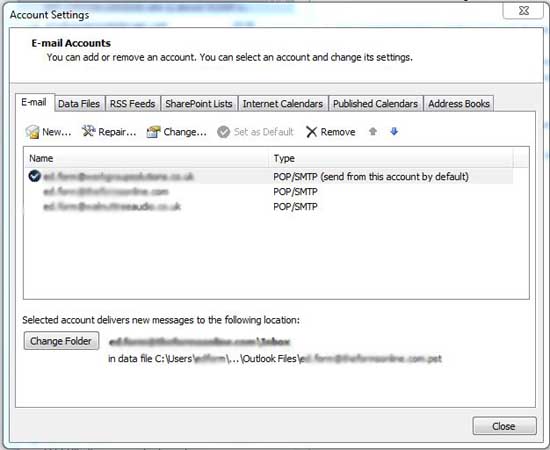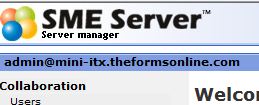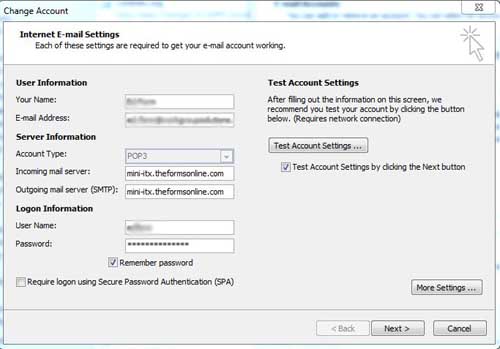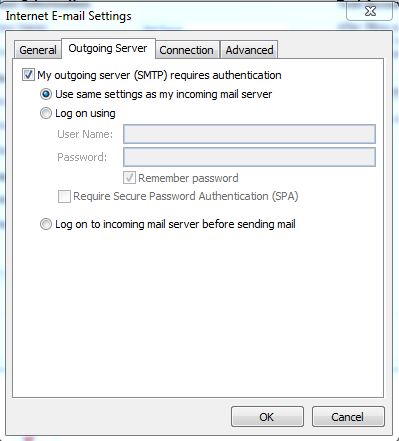Difference between revisions of "Email - Setting up E-mail clients for SME 8.0"
| Line 47: | Line 47: | ||
===Set encryption and authorisation parameters=== | ===Set encryption and authorisation parameters=== | ||
| − | Now take the tick out of the ''''Test Account Settings'''' item on this page and click ''''More Settings'''' Then click the ''''Outgoing Server'''' tab in the resulting dialogue. | + | Now take the tick out of the ''''Test Account Settings by clicking the Next botton'''' item on this page and click ''''More Settings.'''' Then click the ''''Outgoing Server'''' tab in the resulting dialogue. |
[[File:Outgoing Server.jpg]] | [[File:Outgoing Server.jpg]] | ||
Revision as of 00:23, 5 February 2011
Why This Is Needed
From SME 8.0beta6 onwards, standard, unauthorised access to SMTP on Port 25 has been prevented, by design, even for users in the local network, and replaced with SSL authorised access on Port 25. At the same time the security arrangements in standard Windows Email clients, such as Outlook, have been beefed up. The result is that setting-up such clients to successfully authorise against SME-Server SMTP has become a little complicated. This Howto is intended to give step-by-step instructions.
The same sequence of steps should apply to most other Email Clients, although the locations of the settings may vary.
Thanks
This Howto could not have been written without the help and advice of 'byte.' He doesn't identify himself in his profile in the forums, but he is owed a pint or two next time he hits rural Suffolk!
Assumptions
This Howto was researched and tested on a systems where the server is used as the SMTP server for the network. Systems with a Smarthost configured should work in the same way because the fundamental principle is to allow clients to authorise to the SME Server before mail is accepted for transmission. Perhaps someone with such a system can check and confirm this assumption.
The configuration details given are from Outlook 2010; other versions of Outlook are similar.
Things to do in the Server Manager
Allow SSMTP
Login to the server manager at http://your_server_address/server-manager and click on the menu item Email. Then click the button labelled 'Change e-mail reception settings.'
Change 'SMTP authentication' to 'Allow both SMTP and SSMTP' and save the new settings.
Things to do in Outlook
Make sure the Fully Qualified Server Name is used
This is necessary because the SME Server's self-issued security certificate uses this name. Servers described by IP addresses will cause Outlook to require that the certificate be accepted again every time the program is restarted and will play havoc with automatic email use.
Click 'File' then 'Account Settings' and then the drop-down 'Account Settings' button.
In the 'Account Setings' dialogue, highlight an email account and click the small 'Change' button above.
In the first page of the dialogue that results, make sure that your incoming and outgoing servers are both the fully qualified name of your server. This will take the form - 'server_machine_name.domain_name.com' [ or .co.uk, .org etc.] and will be as shown in the top left hand corner of the Server Manager screen with the username 'admin' in front. Use the part after 'admin@' - In my case this is 'mini-itx.theformsonline.com' and is shown below.
The Change Account dialogue is shown below with the fully qualified server name in both incoming and outgoing server settings.
Set encryption and authorisation parameters
Now take the tick out of the 'Test Account Settings by clicking the Next botton' item on this page and click 'More Settings.' Then click the 'Outgoing Server' tab in the resulting dialogue.



